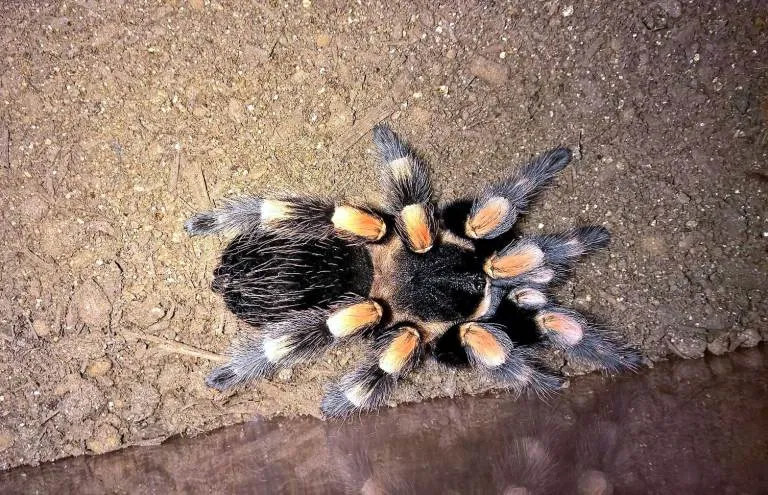Tarantulas for Beginners Top 5 Choices!
Embarking on the journey of tarantula ownership can be an exciting experience, offering a unique perspective on the natural world and the fascinating behaviors of these arachnids. For beginners, selecting the right species is crucial to ensure a positive and manageable experience. This guide highlights the top 5 tarantula choices perfect for those new to the hobby, providing insights into their care, temperament, and overall suitability for novice keepers. Before diving in, it’s essential to understand what makes a tarantula beginner-friendly and the fundamental aspects of their care. This will enable new owners to provide a safe and enriching environment for their new pet and enjoy the wonders of the tarantula world.
What Makes a Tarantula Beginner-Friendly?
Several factors contribute to a tarantula being considered beginner-friendly. Temperament plays a significant role; species that are docile and less prone to defensive behaviors are preferred. Handling is generally discouraged for all tarantulas, but a calm temperament reduces the risk of bites or urticating hairs being flicked. Another key factor is the ease of care. Beginner tarantulas often require less demanding environmental conditions, such as humidity and temperature, and can tolerate minor fluctuations without significant stress. Furthermore, their feeding habits are usually straightforward, accepting readily available prey items like crickets or mealworms. Longevity is also a consideration; while some species can live for decades, beginners might prefer species with a shorter lifespan to gain experience without the long-term commitment.
Temperament and Handling Considerations
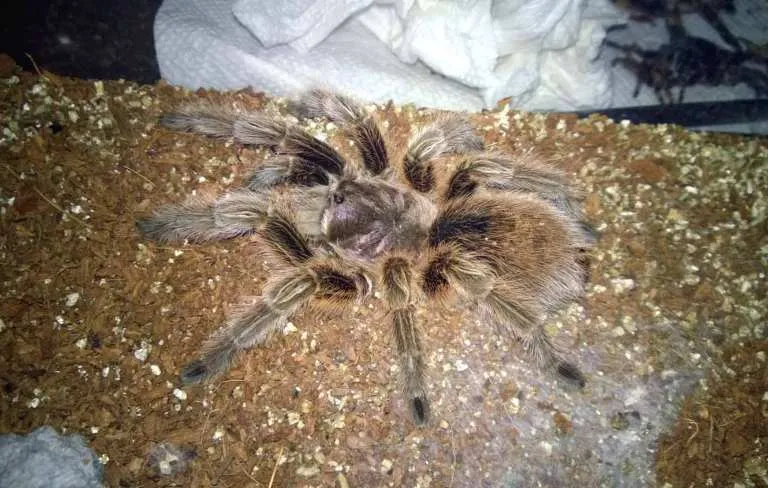
Temperament is arguably the most crucial aspect of choosing a beginner tarantula. While tarantulas generally aren’t cuddly pets, some species are known for their calmer dispositions. This means they are less likely to display defensive behaviors such as raising their front legs, hissing, or biting when disturbed. However, it’s important to remember that each tarantula has its own personality. Handling is generally not recommended for any tarantula, even those with a docile temperament. It can be stressful for the spider and increases the risk of injury to both the tarantula and the handler. Observing your tarantula in its enclosure is the best way to appreciate its natural behaviors. If you must interact, use tools like a long paintbrush to gently guide it if needed.
Venom Potency and Health Risks
All tarantulas possess venom, but the potency varies greatly between species. The venom of most beginner-friendly tarantulas is relatively mild, similar to a bee sting, causing localized pain and swelling. However, individuals can have allergic reactions. Additionally, tarantulas have urticating hairs, which they can flick off their abdomen as a defense mechanism. These hairs can cause skin irritation and, if inhaled, respiratory issues. It is essential to research the specific species’ venom potency and defensive mechanisms. Always wash your hands thoroughly after handling anything in the enclosure and avoid touching your eyes or face. In general, tarantulas pose a minimal health risk if handled with caution and respect.
Care Requirements Simplified
Simplified care is key for beginners. Beginner-friendly tarantulas typically thrive with straightforward setups. They require a suitable enclosure, appropriate substrate, a water dish, and a hide. The enclosure should be appropriately sized for the tarantula’s size, allowing ample space without being too large, which can make it difficult for the tarantula to find its food. Substrate should retain moisture and allow the tarantula to burrow if it’s a terrestrial species. Maintaining the correct humidity level is vital, but it doesn’t need to be overly complex. A water dish provides hydration, and a hide offers security. Feeding these tarantulas is usually simple, with readily available prey like crickets or mealworms. Monitoring these key aspects makes tarantula keeping manageable for novice keepers.
Essential Equipment for Tarantula Keeping
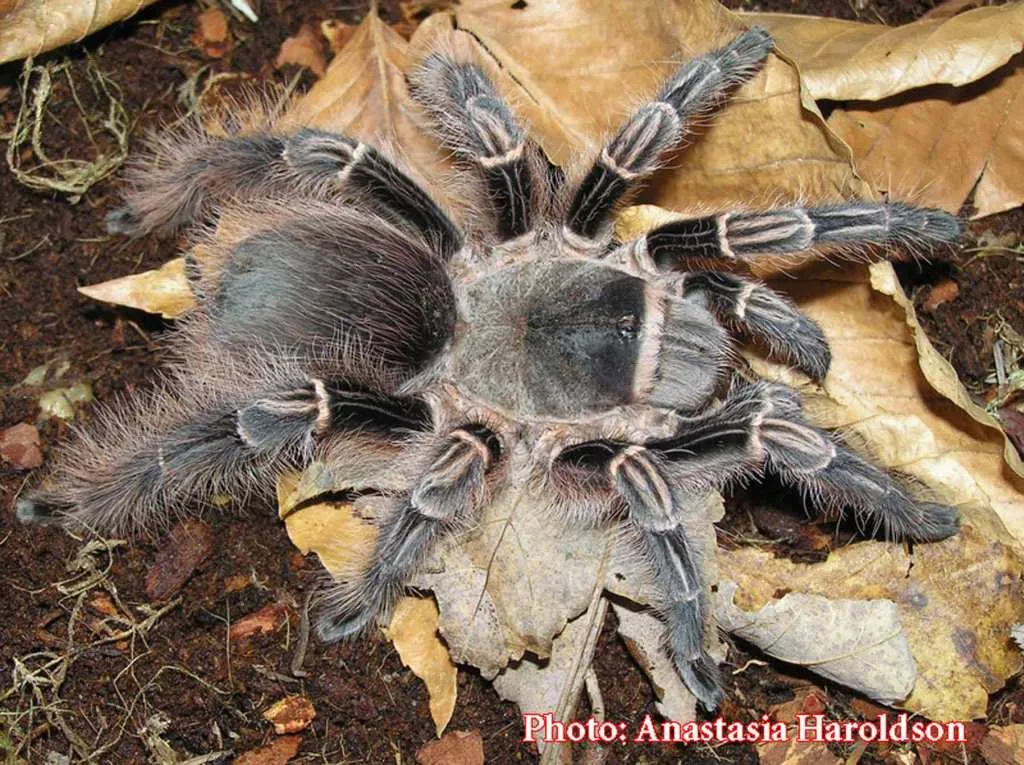
Setting up the proper habitat is essential for the well-being of your tarantula. The essential equipment includes a suitable enclosure, which should be appropriately sized for the tarantula’s adult size. A secure lid is crucial to prevent escape. The enclosure should also feature a substrate, such as coco fiber or peat moss, to help maintain humidity and provide a burrowing environment. A water dish is essential to provide a constant water source. A hide, like a piece of cork bark or a commercially available hide, provides a secure retreat, reducing stress and promoting natural behavior. Other optional items include a thermometer and hygrometer to monitor temperature and humidity. Finally, a long pair of tongs is useful for feeding and removing uneaten prey, and a spray bottle for misting the enclosure to maintain humidity levels.
The Top 5 Tarantula Choices for Beginners
Here are the top 5 tarantula choices, known for their manageable care requirements and generally docile temperaments. These species offer a fantastic introduction to the world of tarantula keeping, providing a rewarding experience for new owners. Remember that individual personalities can vary, and responsible research is crucial before acquiring any pet. These choices provide a great starting point, allowing beginners to enjoy the unique world of tarantula ownership.
The Chilean Rose Hair Tarantula (Grammostola rosea)
The Chilean Rose Hair tarantula, also known as the Rose Hair, is a perennial favorite among beginners. This species is prized for its docile nature and ease of care. Their calm disposition and relatively slow movements make them less intimidating for new owners. They are typically less likely to flick urticating hairs compared to other species. These tarantulas also have a long lifespan, with females often living for over 20 years, which provides a significant commitment and opportunity to enjoy the experience. This species is hardy and can tolerate slight fluctuations in environmental conditions, making them a good choice for those new to the hobby.
Characteristics of Chilean Rose Hair

Chilean Rose Hairs are medium-sized tarantulas, typically reaching a leg span of around 5-6 inches. They are known for their beautiful coloration, ranging from a reddish-brown to a rose-colored hue, particularly on their carapace and legs. Their bodies are covered in fine hairs that give them a soft, velvety appearance. They are terrestrial species, meaning they live primarily on the ground, and they often burrow, making them visually interesting. These tarantulas are generally slow-moving and spend much of their time hidden in their burrows or under hides, which contributes to their laid-back personality. Their appearance and behavior make them an appealing choice for beginners.
Care and Habitat for Chilean Rose Hair
Caring for a Chilean Rose Hair is straightforward. They require a 5-10 gallon enclosure for adults, with a substrate like coco fiber or peat moss. The substrate should be deep enough for burrowing, typically 3-4 inches. A water dish should be provided for hydration. The temperature should be maintained between 70-80°F (21-27°C), and humidity levels should be kept at around 60-70%. These tarantulas are relatively tolerant of variations in temperature and humidity. Feeding involves offering appropriately sized insects, like crickets or mealworms, 1-2 times a week for adults. Removing uneaten prey is essential to prevent stress and potential mold growth. Regular monitoring of the enclosure ensures that your tarantula remains healthy and content.
The Mexican Red Knee Tarantula (Brachypelma hamorii)
The Mexican Red Knee is another popular choice, often recommended for its stunning appearance and relatively docile temperament. They are known for their striking coloration, which makes them visually appealing. The Red Knee tarantulas are also known for their generally calm demeanor, making them less likely to display defensive behaviors. Their care requirements are similar to the Chilean Rose Hair, making it a relatively easy species to maintain. They can adapt to different environmental conditions. They make a great entry-level tarantula for those new to the hobby and willing to take the plunge.
Mexican Red Knee Appearance
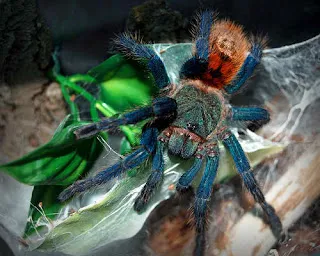
The Mexican Red Knee is easily recognized by its vibrant coloration, featuring black legs with striking orange-red bands at the joints. Their carapace is typically a dark brown color. They are medium-sized tarantulas, with a leg span reaching up to 6 inches. The contrast between the black and red bands makes them one of the most visually appealing tarantulas, often capturing the attention of new owners. Their overall appearance is bold and attractive, making them a beautiful display animal.
Housing and Feeding the Mexican Red Knee
Housing a Mexican Red Knee is straightforward. A 10-20 gallon enclosure is appropriate for adults. The substrate should be a mix of coco fiber and peat moss, approximately 4-6 inches deep. A water dish, a hide, and some decorations such as cork bark or artificial plants, will provide a suitable environment. Temperature should be maintained at 75-85°F (24-29°C), with humidity around 60-70%. Feeding involves offering crickets, mealworms, or roaches, one to two times a week for adults. Make sure to remove uneaten food to prevent mold growth. These tarantulas are relatively low maintenance and provide a rewarding experience for beginner keepers.
The Curly Hair Tarantula (Tliltocatl albopilosus)
The Curly Hair tarantula is known for its unique appearance and gentle temperament, making it a popular choice for beginners. This species is characterized by its dark brown body and curly hairs, giving it a distinctive fuzzy appearance. The Curly Hair tarantula is generally docile and less inclined to bite or display other defensive behaviors. They are quite hardy and can adapt to variations in environmental conditions. This makes them a solid choice for those new to tarantula keeping, providing a relatively low-stress experience.
Curly Hair Tarantula Overview
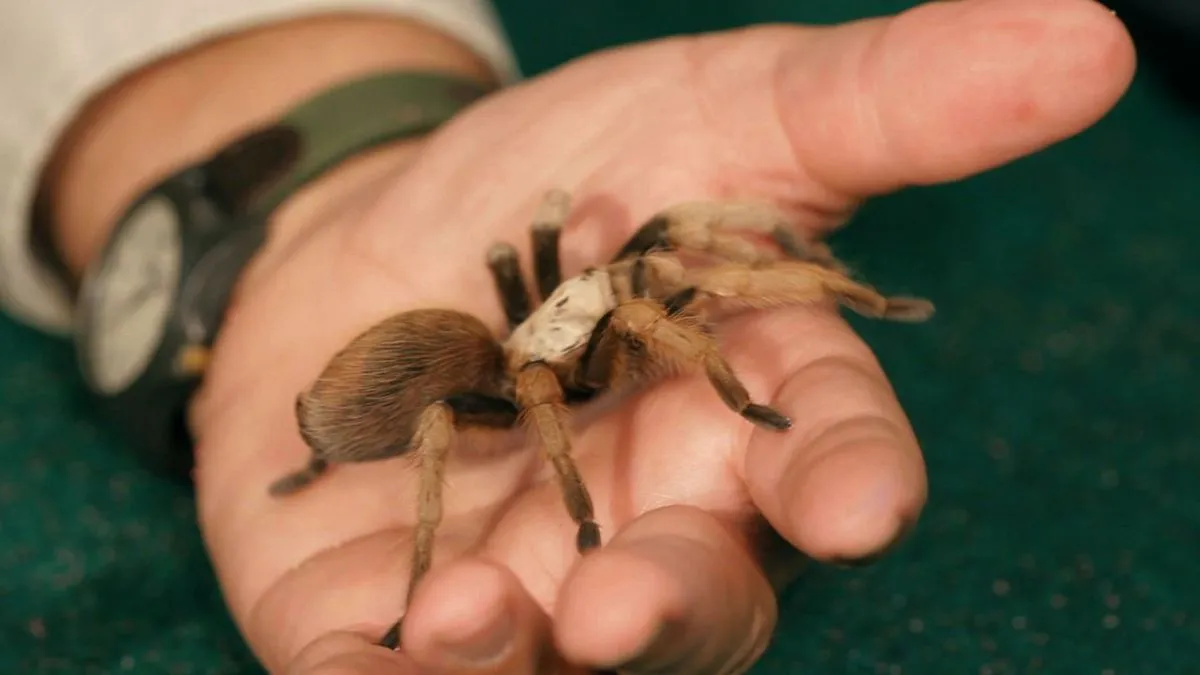
Curly Hair tarantulas are medium-sized, with adults reaching a leg span of about 4-6 inches. They are known for their distinctive appearance, featuring a dark brown body and a covering of curly, golden hairs. These hairs give them their characteristic fuzzy look. They are terrestrial, meaning they live on the ground, and they are known to be good burrowers. Their calm demeanor and interesting appearance make them very appealing to keepers. Their relative tolerance to variations in environmental conditions also helps make them a great starter choice for beginners.
Creating a Habitat for Curly Hair Tarantulas
Creating a habitat for a Curly Hair tarantula is simple. An enclosure with a 5-10 gallon capacity is suitable for adults. The substrate should be a mix of coco fiber and peat moss, providing enough depth to encourage burrowing (4-6 inches). A water dish for drinking, a hide, and some decorations will help your tarantula thrive. Maintaining a temperature of 75-80°F (24-27°C) with a humidity level of around 60-70% is appropriate. Feeding is usually done 1-2 times a week with appropriately sized insects, such as crickets or mealworms. Regular enclosure maintenance is important to ensure that your tarantula stays healthy.
The Costa Rican Zebra Tarantula (Aphonopelma seemanni)
The Costa Rican Zebra tarantula is another excellent choice, known for its striking appearance and relatively manageable care requirements. This species has a unique aesthetic appeal, marked by black and white striped legs that resemble a zebra. Their beautiful appearance and their relatively docile demeanor, makes them an attractive and accessible option for beginner tarantula keepers. They are generally less defensive, though, as always, handling is not recommended. This adds to their appeal.
Costa Rican Zebra Characteristics
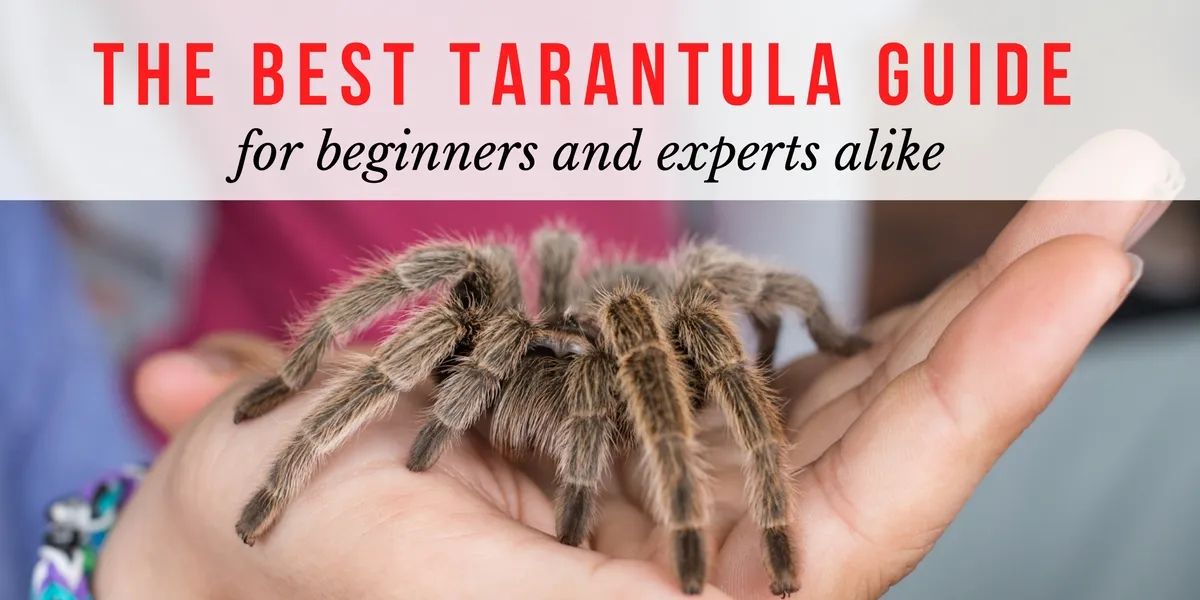
Costa Rican Zebras are medium-sized, with a leg span of approximately 5-6 inches. They are named for their distinctive black and white striped legs. Their carapace is typically a dark brown color. They are terrestrial and often burrow, adding visual interest to their habitat. Their striking coloration and relatively calm disposition make them an excellent choice for beginner keepers. These tarantulas are also known for being relatively hardy and easy to care for, enhancing their appeal to beginners.
Feeding and Maintenance for Zebra Tarantulas
Care for a Costa Rican Zebra is relatively straightforward. A 10-20 gallon enclosure is suitable for adults. The substrate should be a mix of coco fiber and peat moss, allowing for burrowing. A water dish, a hide, and some decorations will complete their habitat. Temperature should be maintained between 75-85°F (24-29°C) with a humidity level of around 60-70%. Feeding involves offering crickets, mealworms, or roaches 1-2 times a week. Removal of uneaten food helps keep the enclosure clean and prevents potential health issues. Regular monitoring and maintenance will ensure a healthy and happy tarantula.
The Pinktoe Tarantula (Avicularia avicularia)
The Pinktoe tarantula is a captivating species known for its arboreal lifestyle and beautiful coloration. These tarantulas add a unique dimension to the hobby, being one of the few arboreal species suitable for beginners. Their relatively docile temperament and striking appearance make them popular, even though the care is slightly different from other species. Their overall care and interesting lifestyle make them a good choice for keepers ready to explore the world of tarantulas.
Pinktoe Tarantula Description
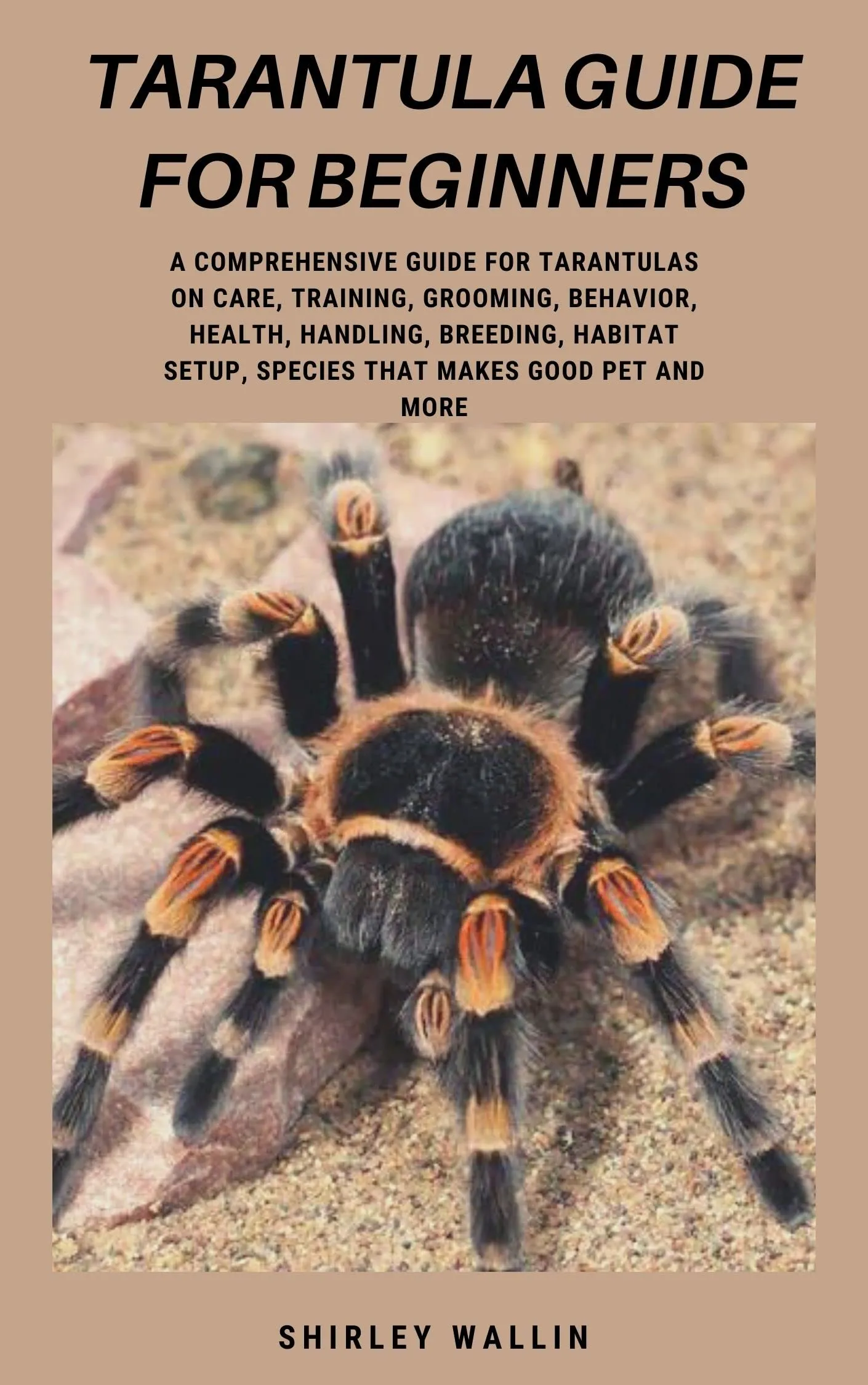
Pinktoe tarantulas are medium-sized, typically reaching a leg span of around 4-6 inches. They are characterized by their distinctive pink or reddish-pink toe pads, which give them their name. They are arboreal species, meaning they live in trees and branches. Their coloration is often a metallic green or blue hue, making them visually striking. Their arboreal nature provides an interesting contrast to the more common terrestrial tarantulas. They are a great option for owners that are interested in these unique characteristics.
Pinktoe Tarantula Habitat and Diet
Creating a habitat for a Pinktoe tarantula differs from the terrestrial species. A tall enclosure is required, such as an 8x8x12 or larger, as these tarantulas prefer climbing. Substrate can be coco fiber or peat moss. Vertical elements such as cork bark, branches, and artificial plants are essential for climbing and hiding. Temperature should be maintained between 75-80°F (24-27°C), and humidity levels should be around 70-80%, requiring regular misting. Feeding should be done 1-2 times a week with crickets, fruit flies, or small roaches. Regular maintenance and careful attention to the humid environment is very important.
General Tarantula Care Tips
Regardless of the species you choose, some general care tips are applicable across the board. Providing a safe and enriching environment is the key to a happy and healthy tarantula. This involves proper enclosure setup, consistent feeding, and monitoring. This also includes providing appropriate humidity and temperature levels. It is also important to familiarize yourself with your tarantula’s specific care needs and consult with experienced keepers or reputable sources for guidance. By following these general guidelines and researching specific species, you can ensure a successful start in tarantula keeping.
Humidity and Temperature Control
Controlling humidity and temperature is crucial for the well-being of your tarantula. Use a thermometer and hygrometer to monitor the enclosure. The specific needs vary depending on the species, but generally, terrestrial species prefer lower humidity compared to arboreal species. Maintaining proper humidity involves misting the enclosure with water, providing a water dish, and using appropriate substrate materials. Regarding temperature, most species thrive in a range of 70-85°F (21-29°C). Avoid placing the enclosure near direct sunlight or drafts. Adjust the environmental parameters according to the needs of your tarantula to ensure it remains healthy and comfortable.
Substrate and Enclosure Maintenance
Proper substrate and regular enclosure maintenance are crucial. Choose a substrate suitable for your tarantula’s needs. Coco fiber, peat moss, and vermiculite are common choices, each providing varying levels of moisture retention and burrowing suitability. Enclosure maintenance includes removing uneaten food, molted exoskeletons, and any waste. This ensures a clean environment and minimizes the risk of mold or bacterial growth. Spot-clean the enclosure regularly and perform a complete substrate change periodically, usually every 6-12 months, depending on the species and the buildup of waste. Regular maintenance keeps the enclosure clean and supports the health of your tarantula.
Feeding Your Tarantula
Feeding your tarantula is a straightforward process. Offer appropriately sized prey items, such as crickets, mealworms, or roaches, depending on the tarantula’s size. The frequency of feeding depends on the age and species of the tarantula. Spiderlings may require feeding every few days, while adults can be fed once or twice a week. Remove any uneaten prey within 24 hours to prevent stress to the tarantula and to prevent mold growth. Ensure that the prey items are gut-loaded with nutritious food prior to feeding to provide optimal nutrition to your tarantula. Always provide fresh water in the water dish.
Troubleshooting Common Issues
It is important to be aware of some common health issues that tarantulas can experience. One of the most common problems is dehydration, which is caused by inadequate access to water or low humidity. Ensure the water dish is always full and mist the enclosure if humidity levels are low. Another common issue is mites, which can infest the tarantula’s body and enclosure, causing irritation and potentially spreading diseases. Proper hygiene and quarantine procedures for new tarantulas can help prevent mite infestations. If you notice any issues, consult with an experienced keeper or a veterinarian specializing in exotic animals.
Common Health Problems
Tarantulas can experience health problems. Dehydration is a common issue, which can be caused by inadequate access to water or low humidity. Always ensure that the water dish is full and mist the enclosure if humidity levels are low. Mites can infest the tarantula’s body and enclosure, causing irritation and potentially spreading diseases. Proper hygiene and quarantine procedures for new tarantulas can help prevent mite infestations. During molting, it’s important to maintain humidity levels and avoid disturbing the tarantula. If you observe any health issues, seek advice from experienced keepers or a veterinarian.
Where to Buy Your Beginner Tarantula
Finding a reputable source is crucial when purchasing a tarantula. There are several options, including local reptile shows, specialized pet stores, and online breeders. Researching different sources ensures that you are acquiring a healthy tarantula and receiving the necessary care information. Always look for a seller who is knowledgeable and willing to answer your questions. This also reduces the risk of acquiring a tarantula from a questionable source, avoiding diseases or improper care practices. Buying from a reputable source ensures that you are setting yourself and your new tarantula up for success.
Responsible Sourcing and Breeders
When purchasing your tarantula, always opt for responsible sources. Look for breeders who prioritize the health and well-being of their animals. A reputable breeder will be knowledgeable about their species, provide care information, and be willing to answer questions. They will also provide a healthy tarantula and provide insights into the spider’s background. Avoid purchasing tarantulas from sources that appear to be overcrowded or that have poor hygiene. Research the breeder’s reputation before committing to a purchase. Purchasing responsibly guarantees that you are supporting ethical practices and giving your tarantula the best possible start to a healthy and fulfilling life.
Choosing the right tarantula is the first step toward enjoying this incredible hobby. By selecting one of the top 5 beginner-friendly species, you can ensure a rewarding experience. Remember to do your research, provide proper care, and appreciate the unique behaviors of your tarantula. With patience and the right approach, you will be able to enjoy the fascinating world of tarantula keeping.
